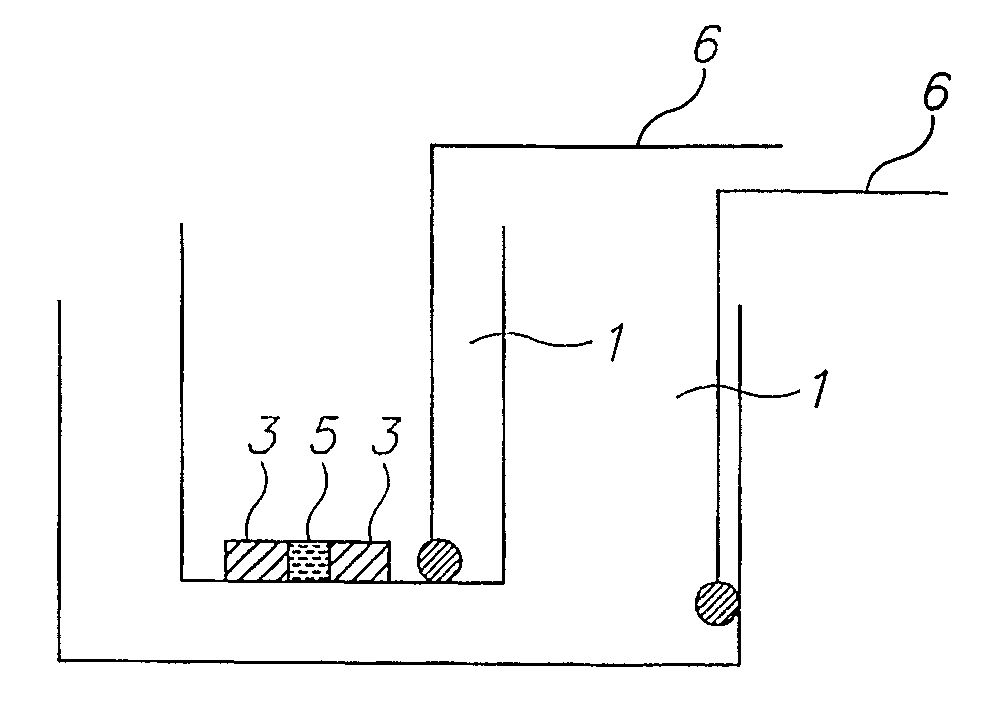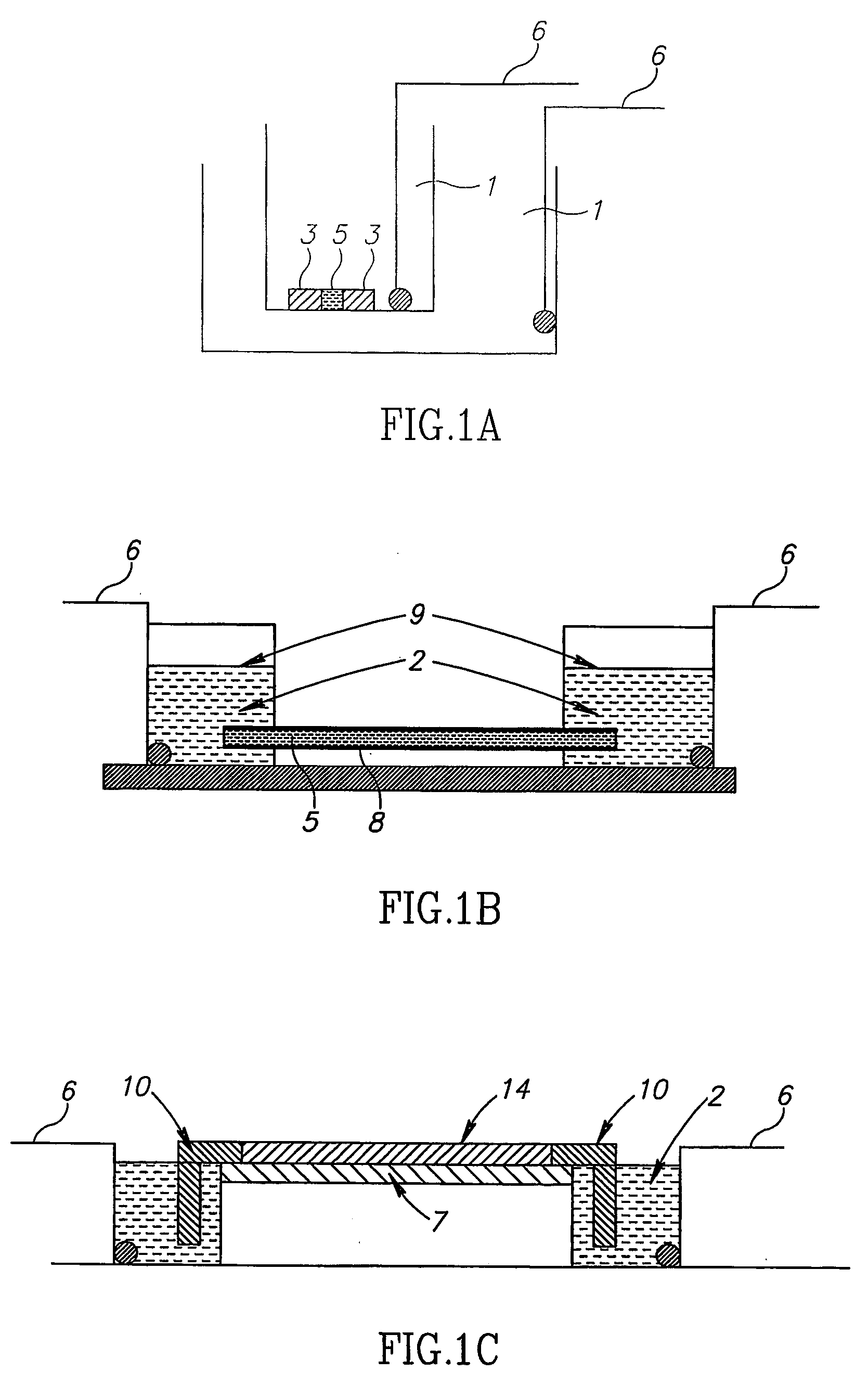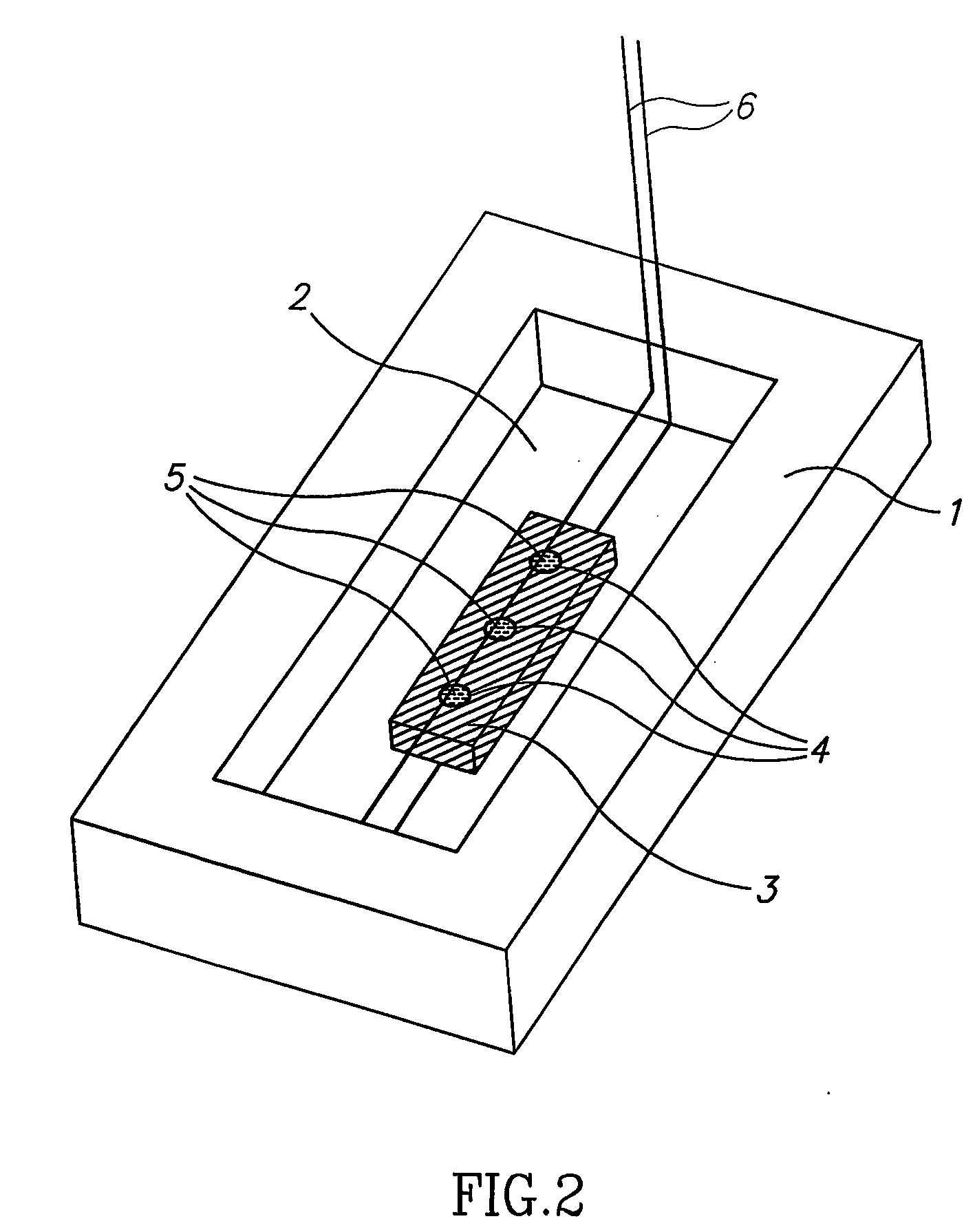Methods and apparatus for rapid crystallization of biomolecules
a biomolecule and crystallization technology, applied in the field of biomolecule crystallization methods and apparatuses, can solve the problems of slow crystallization process, tedious process, and method rarely used in protein crystallization, and the other methods known in the ar
- Summary
- Abstract
- Description
- Claims
- Application Information
AI Technical Summary
Benefits of technology
Problems solved by technology
Method used
Image
Examples
example 1
Crystallizing a Component of the p53 Protein
[0238] Three protein samples were supplied: [0239] (a) p53 human DBD [pI (theoretical)=8.83][0240] (b) β-transcription factor from C Elegans [pI(theoretical)=5.98][0241] (c) human β-transcription factor -[pI(theoretical)=5.5]
[0242] All three samples were analyzed by an initial IEF on commercial IPG strips pH 3-10 (Amersham) to determine the pH of the specific protein (FIG. 4). As can be seen in FIG. 4, each one of the three “purified” protein solutions was found to be composed of a large number of different protein bands.
[0243] For crystallization according to the method of the invention, a band corresponding to a certain pI of a specific protein was selected. Crystallization was carried out using a homemade IPG strip with pH values in the vicinity of the theoretical pI and an apparatus as schematically described in FIG. 4C. A few crystals were rapidly formed. The crystals were extracted from the IPG gel and the scattering pattern obtain...
example 2
Feasibility Demonstration of Crystallization of an IEF Separated Protein by Using an IPG Zoom Strip
[0244] Since our crystallization technique requires only microgram quantities of proteins, separation by IEF can serve as a source of material to obtain crystals. Such an experiment was performed on one of the bands separated from the p53 sample as seen in FIG. 5.
[0245] The following procedure was employed: from the IPG strip we selected and cut out the band at pH˜9.6, for crystallization we chose to utilize the system presented in FIG. 4C. For that purpose a short IPG zoom strip was prepared in the range of 9.5-9.75 in steps of 0.05. The strip was prepared by standard density gradient method. The protein band cut out from the IEF experiment was glued on with polyacrylamide close to the edge of the IPG strip. The strip was placed on top of the electrophoresis chamber shown in FIG. 4C. A standard IEF procedure resulted in focusing and crystallization of the separated fraction generati...
example 3
Myorlobin Crystallization
[0246] Horse Heart Myoglobin (75 μg) was dissolved in 1.5 ml of water and introduced into the crystallization apparatus. This solution served as the running buffer (pH=7.00) for the IEF procedure. Immobiline™ buffer (Amersham) was polymerized into 10% polyacrylamide gel cylindrical cavities of 1 mm diameter and 1 mm depth (pH=6.80). An IEF separation was performed under the following conditions: 1200V, 30 min and distance between electrodes of 0.5 cm.
[0247] IEF was performed under intensive shaking of the apparatus, at 4° C., in order to facilitate protein migration within the buffer solution. An efficiency calibration which was conducted for the IEF procedure, indicated that the amount of protein, which was accumulated in the gel cavity, was about 50% of the total protein in the solution.
[0248] Inspection of the gel cavity under a microscope, revealed a highly developed crystalline structure in the gel (FIG. 7A).
PUM
| Property | Measurement | Unit |
|---|---|---|
| concentrations | aaaaa | aaaaa |
| temperature | aaaaa | aaaaa |
| electric field intensity | aaaaa | aaaaa |
Abstract
Description
Claims
Application Information
 Login to View More
Login to View More - R&D
- Intellectual Property
- Life Sciences
- Materials
- Tech Scout
- Unparalleled Data Quality
- Higher Quality Content
- 60% Fewer Hallucinations
Browse by: Latest US Patents, China's latest patents, Technical Efficacy Thesaurus, Application Domain, Technology Topic, Popular Technical Reports.
© 2025 PatSnap. All rights reserved.Legal|Privacy policy|Modern Slavery Act Transparency Statement|Sitemap|About US| Contact US: help@patsnap.com



